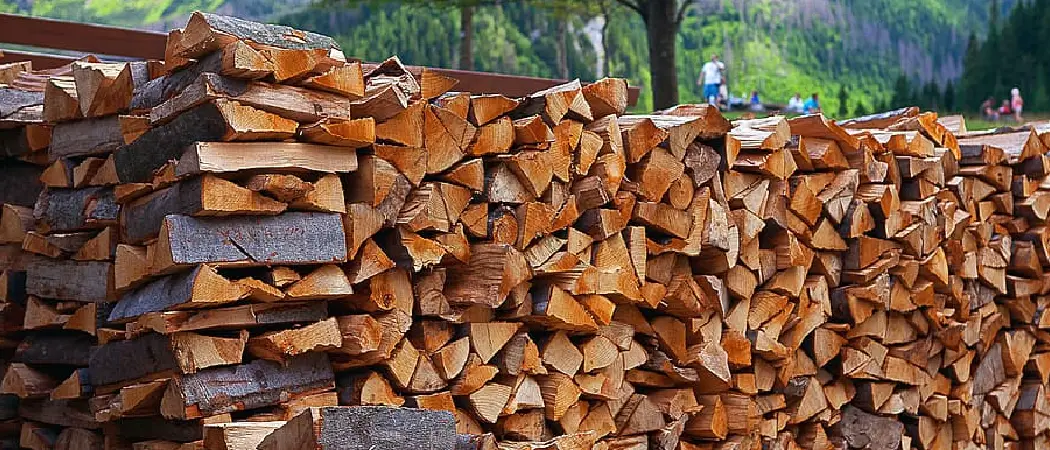Do you love the smell of burning wood on chilly evenings and spending quality time with family around a cozy bonfire? If so, then making sure your firewood is dry enough to burn is essential! Damp wood means longer lighting times, more smoke production, and an overall less enjoyable experience.
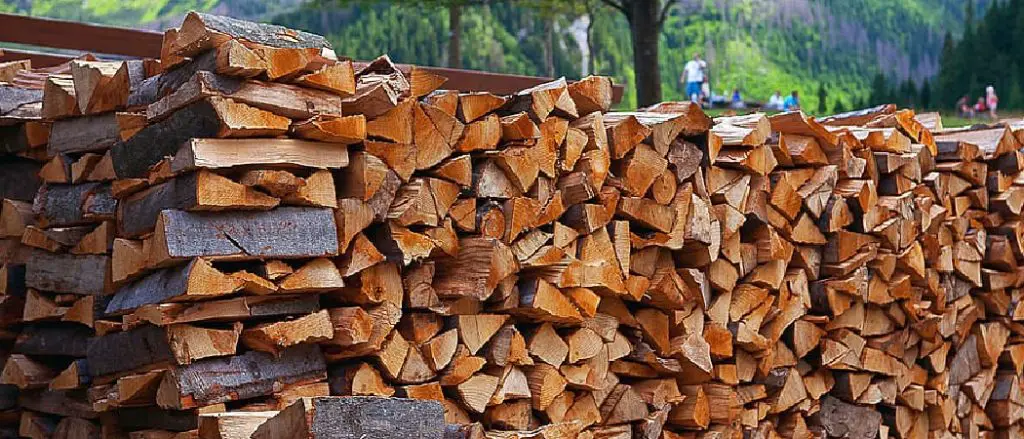
In this blog post, we will discuss how you can tell if your wood is ready for burning – from checking its moisture level to understanding the type of wood – so that you can get perfect flames every single time! So keep on reading to learn more about how to tell if wood is dry enough to burn.
Why Do You Need to Know About how To Tell if Wood Is Dry Enough to Burn
Understanding how to determine if the wood is dry enough to burn is essential for several reasons:
1. Efficiency:
Burning dry wood ensures efficient combustion, which means more heat is produced per unit of wood. Dry wood ignites more easily, burns hotter, and produces less smoke. This efficiency translates to better heating, reduced fuel consumption, and cost savings.
2. Safety:
Burning wet or green wood can lead to increased smoke production, incomplete combustion, and the buildup of creosote in chimneys. Creosote is a highly flammable substance that can cause chimney fires. By using properly seasoned and dry wood, you minimize the risk of chimney fires and other safety hazards.
3. Environmental Impact:
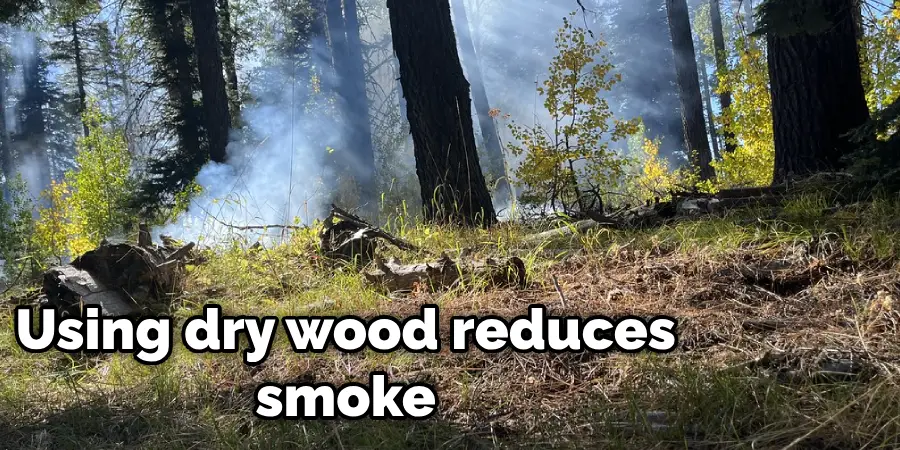
Wet wood generates more smoke and releases harmful pollutants into the air, contributing to poor air quality and potentially affecting respiratory health. Using dry wood reduces smoke emissions and minimizes the environmental impact of wood burning.
4. Longer Burning Time:
Dry wood burns more slowly and provides longer-lasting heat compared to wet wood. By ensuring your wood is sufficiently dry, you can prolong the burning time and enjoy a consistent heat output.
5. Equipment Maintenance:
Burning wet wood can lead to the accumulation of ash and soot in stoves, fireplaces, or heating appliances, which can reduce their efficiency and require more frequent cleaning. Using dry wood helps maintain the longevity and performance of your heating equipment.
By understanding how to assess the dryness of the wood, you can optimize your wood-burning experience, improve efficiency, reduce environmental impact, and ensure the safety of your home and appliances.
8 Step-By-Step Guides on How to Tell if Wood Is Dry Enough to Burn
Step 1: Check for Visible Signs of Wetness
First, take a look at the wood. Are there any visible signs of wetness such as water droplets or damp patches? If you can see moisture on the surface, then the wood is not ready to burn.
Step 2: Break or Split the Wood
If there are no visible signs of wetness, you can break the wood. If it is damp or green, then you will notice that the wood is spongy and produces a sharp sound when hit with an object like an axe.
Step 3: Inspect the Color
Dry wood has a lighter color than wet or green wood and appears more grayish or dull.
Step 4: Check the Weight
Dry wood is much lighter than wet wood and feels less dense when held in your hands. It should also be easy to break without much effort.
Step 5: Feel its Surface
Dry wood has a smoother texture compared to wet wood, which may feel rough and splintery.
Step 6: Observe Its Aroma
When you smell the wood, dry wood has a sweet, smoky odor while wet or green wood has an earthy, musty smell.
Step 7: Check for Insect Infestation
Burning infected or infested wood can cause smoke and soot damage to your home. Inspect the wood for any signs of bug holes or bites, and if found, then don’t use it!
Step 8: Check For Splitting
The last step is to check for splitting. Dry wood should not have any splits or cracks on its surface. If you can see splits in the wood, then it is not ready to be burned.
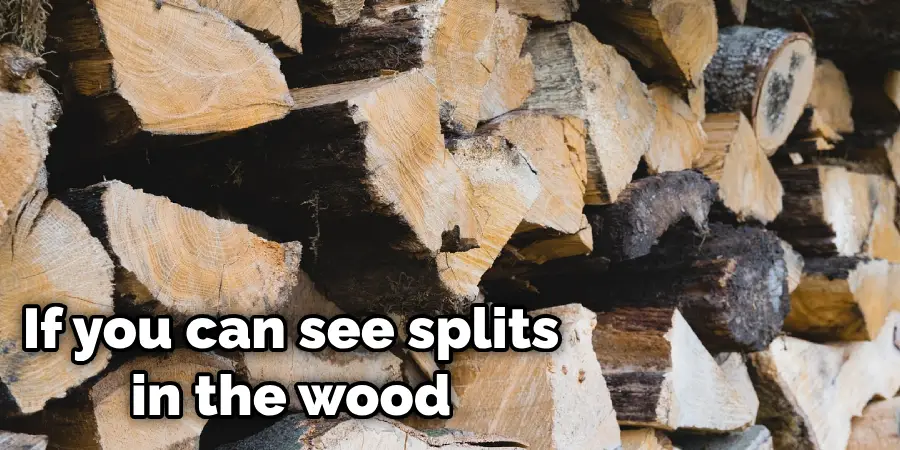
5 Common Mistakes People Might Make While Choosing Dry Woods for Burn
1. Using Wood that Is Too Green or Wet
Green or wet wood produces more smoke and will not burn efficiently. Make sure you only use dry wood to get the best results.
2. Not Paying Attention to Wood Types
Different species of trees have different burning properties, so make sure you understand which type of wood is best for burning. Hardwoods such as oak, hickory, and walnut are the most suitable for firewood.
3. Not Checking for Insect Infestation
Insect infestation can cause smoke and soot damage to your home if you burn infected or infested wood. Make sure to inspect the wood before burning it.
4. Not Storing the Wood Properly
Proper storage is essential to ensure your wood stays dry and ready for burning. Make sure your firewood is stored in a cool, dry place with good ventilation.
5. Not Understanding How Long It Takes for Wood to Dry Out
It takes at least six to nine months for wood to dry out completely. Make sure you plan ahead and allow enough time for the wood to season before burning it.
How to Conduct a Small Burning Test to Evaluate the Wood’s Combustion Properties
1. Prepare a small fire pit
Start by gathering some dry kindling and building a small fire pit. Make sure the kindling is placed in a way that will allow for proper airflow, as this will ensure efficient burning.
2. Place the wood on top of the kindling
Once your fire pit is ready, place the dry wood on top of the kindling.
3. Light it up
Light the fire and observe how it burns. If the fire is burning cool with a steady flame, then you know that your wood is dry enough for burning!
Wood Storage and Seasoning Techniques
Proper storage and seasoning of firewood are crucial to ensure it is well-dried and ready for efficient burning. Here are some tips and guidelines to follow:
1. Choose the Right Location:
- Select a dry and well-ventilated area for storing your firewood. Ideally, a covered woodshed or a dry, well-aerated garage or storage shed is suitable.
- Avoid storing wood directly on the ground, as it can absorb moisture. Use pallets or elevated racks to keep the wood off the ground.
2. Split the Wood:
- Splitting wood into smaller pieces exposes more surface area to air and accelerates the drying process.
- Opt for pieces that are around 3 to 6 inches in diameter for faster and more even drying.
3. Stack the Wood Properly:
- Stack the split wood loosely to allow air circulation. Avoid tightly packing the wood, as it can impede drying.
- Create rows or stacks with spaces between the pieces to allow airflow.
- Consider stacking the wood in a crisscross pattern to provide additional stability.
4. Orientation:
- Stack the wood with the cut ends facing up and the bark sides facing down. This orientation helps moisture to evaporate more efficiently.
- If you’re stacking wood outdoors, ensure that the stack is not directly exposed to rain or excessive moisture.
5. Covering:
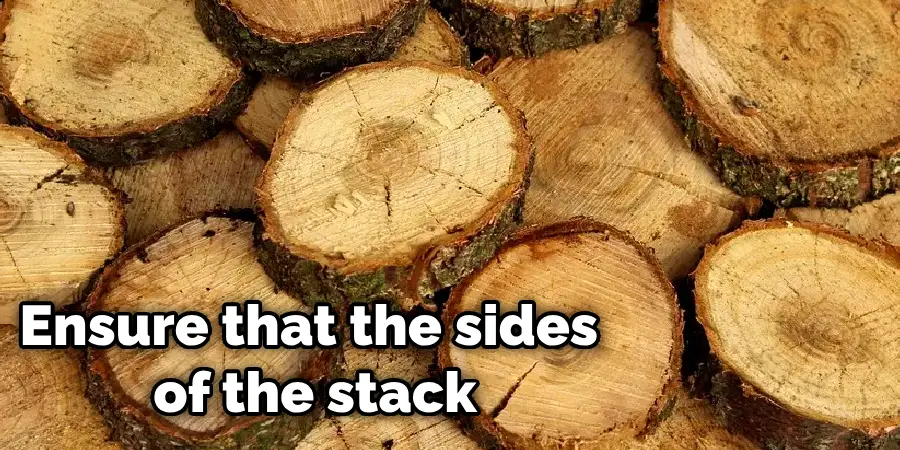
- Cover the top of the woodpile to protect it from rain or snow. Use a waterproof tarp or a cover specifically designed for firewood.
- Ensure that the sides of the stack remain open to allow proper airflow and prevent condensation.
6. Time for Seasoning:
- The drying or seasoning time for firewood can vary depending on several factors, such as wood species, initial moisture content, and climate conditions.
- In general, hardwoods like oak or maple may require around 6 to 12 months to dry properly, while softwoods like pine or spruce may take 6 to 9 months.
- Regularly check the moisture content using a moisture meter or conduct other dryness tests mentioned earlier to determine when the wood is ready to burn.
7. Check for Dryness:
- Before using the firewood, check for signs of dryness such as low moisture content (below 20%), cracks or splits in the wood, and a lighter weight compared to freshly cut wood.
- Perform the visual, weight, sound, or burning test mentioned earlier to confirm that the wood is sufficiently dry.
By following these storage and seasoning techniques, you can ensure that your firewood is properly dried and ready for efficient burning. Remember to plan ahead and start the seasoning process in advance to have well-seasoned wood available for optimal heat output and reduced smoke when the burning season arrives.
Conclusion
Now that you know how to tell if the wood is dry enough to burn, you can enjoy a safe and efficient burning experience with every fire! Make sure to check for visible signs of wetness, and inspect the color and weight of the wood. Also, don’t forget to check for insect infestation and splitting before lighting the fire.
Finally, use proper storage and seasoning techniques to ensure your firewood is dry and ready when you need it most! With these tips in mind, you can enjoy a cozy burning season with minimal smoke. Thanks for reading this article about how to tell if wood is dry enough to burn.

